Born in Prague, Austro-Hungarian Empire, in 1911. Died in Prague, Czech Republic, in 1996.
"I came back from the concentration camps with undermined health, and a new name of František Lukáš. I had been drawing and painting through all those horrors. In Terezín, a group of painters, such as Fritta, Ungar, Kien, Haas, Fleischmann, Aussenberg, Bloch and others took me among themselves. Today, I am the last living member of the Terezín group of painters. " (1991)
František Lukáš: K Osmdesátým Narozeninám (ex. cat.), Státní židovské muzeum, Prague, May 16- June 30, 1991, n.p.
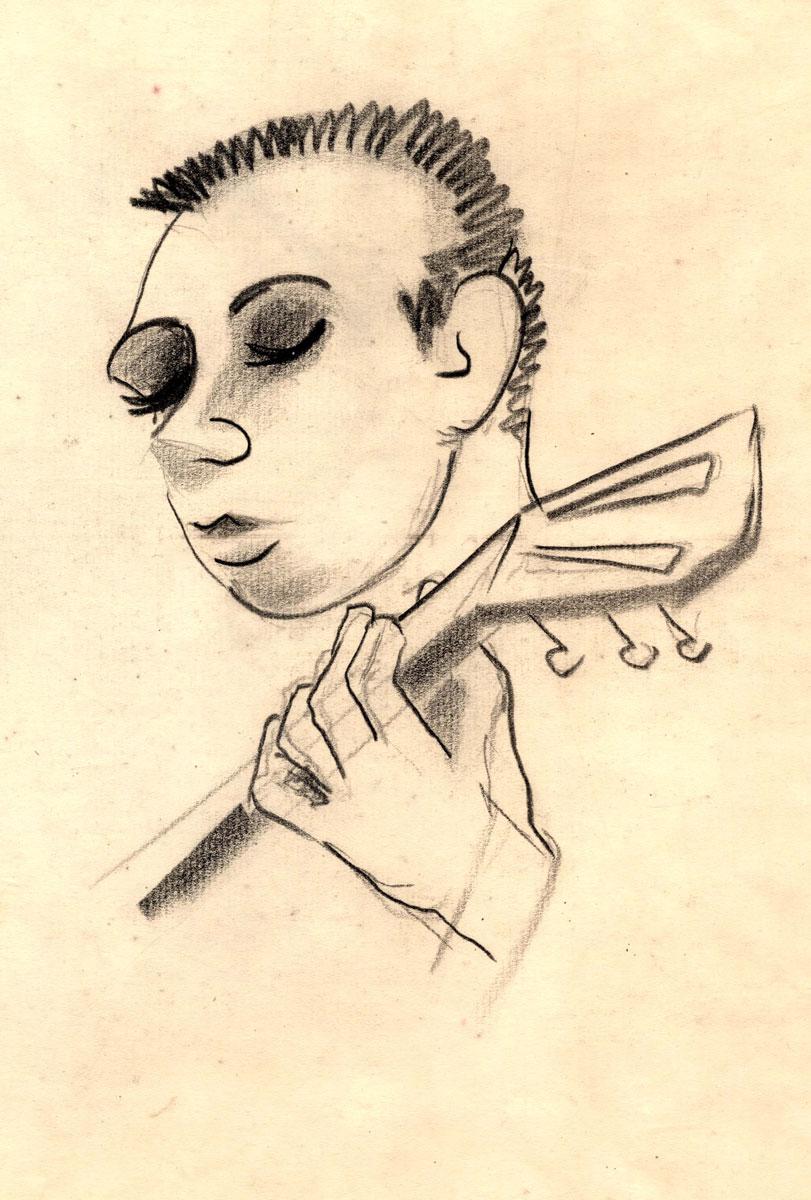
Musician and composer in Prague. Born in 1919, Jindřichův Hradec, Czechoslovakia. On March 6, 1943 deported to the Theresienstadt Ghetto. On September 28, 1944 sent to Auschwitz. On October 10, sent to forced labor in Kaufering, later evacuated on a Death March to Dachau. Liberated by the American Army in May 1945. Returned to Prague. Since 1953, was a musician at the National Theater in Prague.
Charcoal on paper
29.7X21 cm
Collection of the Yad Vashem Art Museum, Jerusalem
Gift of the Prague Committee for Documentation, courtesy of Ze’ev and Alisa Shek, Caesarea

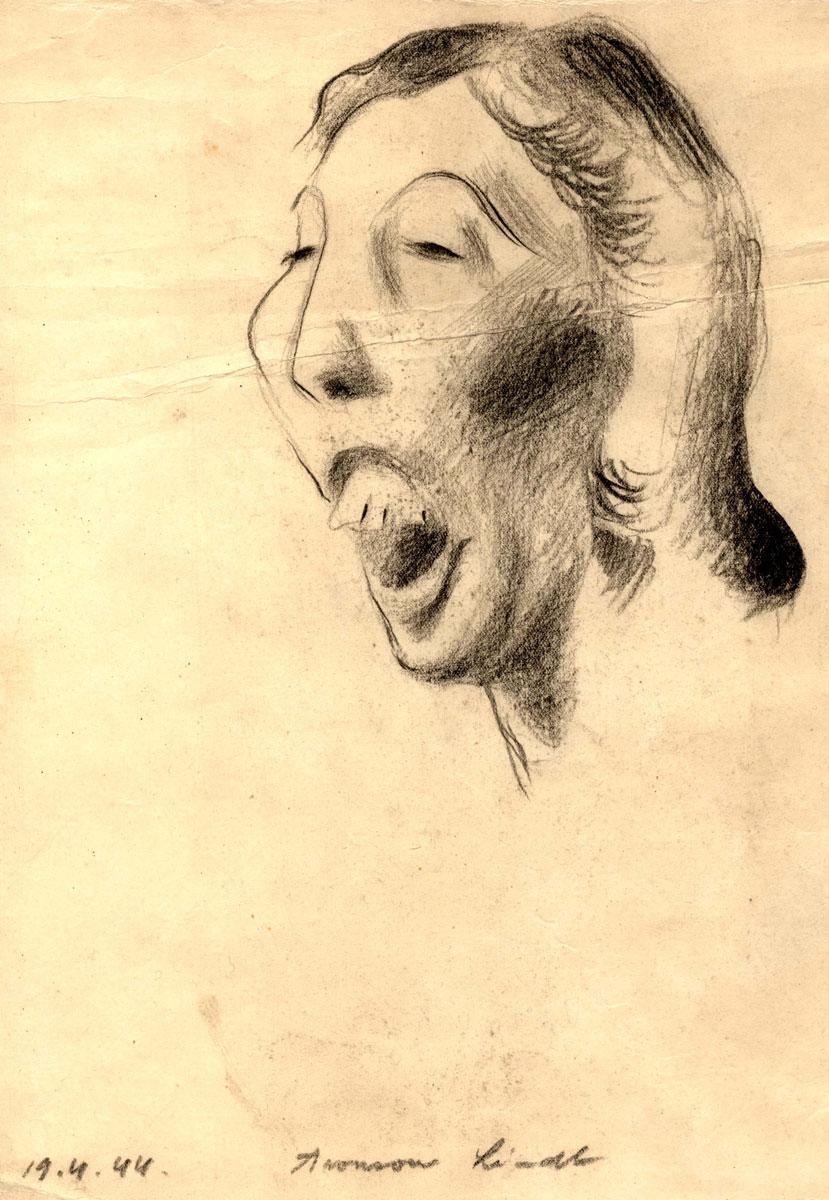
Mezzo-soprano opera singer. Born in 1894. On March 17, 1943 deported to the Theresienstadt Ghetto. Liberated in May 1945. After liberation, she stayed in DP Camp in Deggendorf. Immigrated to New York.
Charcoal on paper
30.7X23.6 cm
Collection of the Yad Vashem Art Museum, Jerusalem
Gift of the Prague Committee for Documentation, courtesy of Ze’ev and Alisa Shek, Caesarea

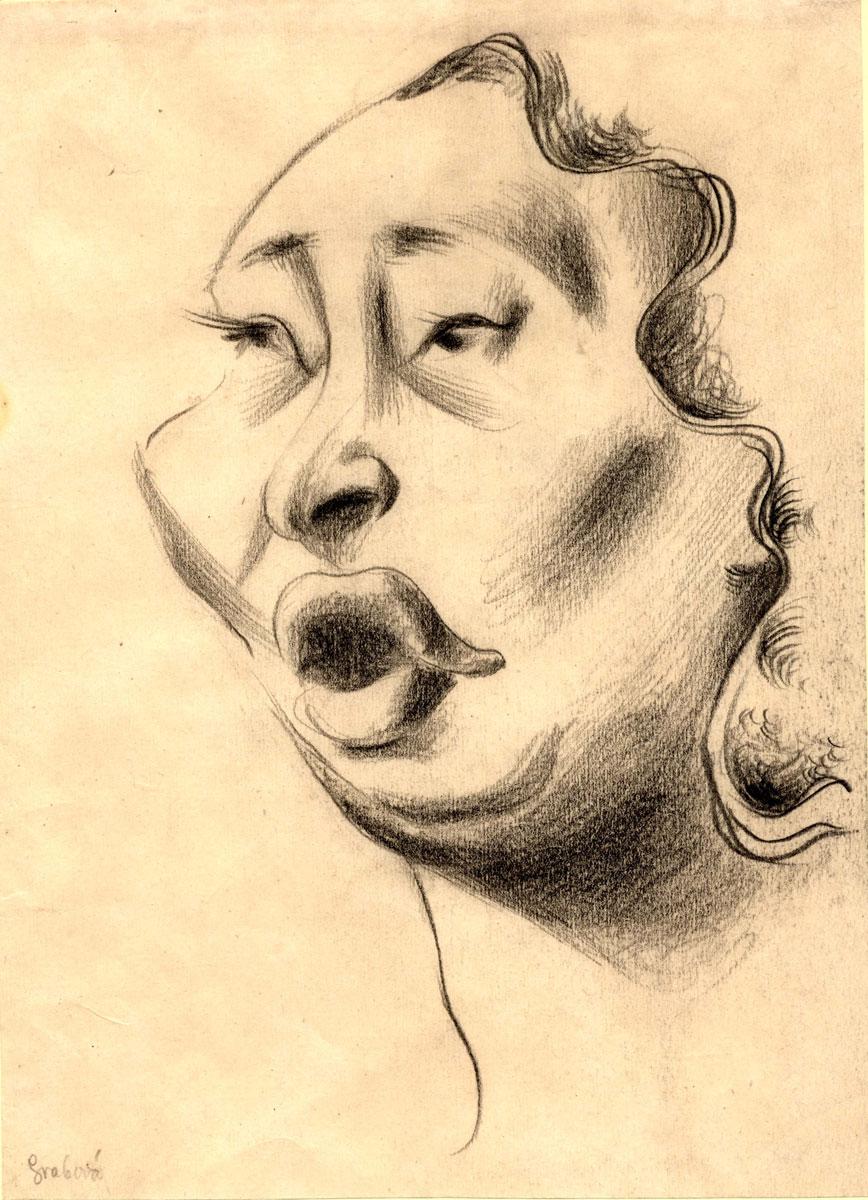
Mezzo-soprano opera singer.
Born in 1899. Lived in Prague. On December 17, 1941 deported to the Theresienstadt Ghetto. Survived.
Charcoal on paper
29.5X21.7 cm
Collection of the Yad Vashem Art Museum, Jerusalem
Gift of the Prague Committee for Documentation, courtesy of Ze’ev and Alisa Shek, Caesarea

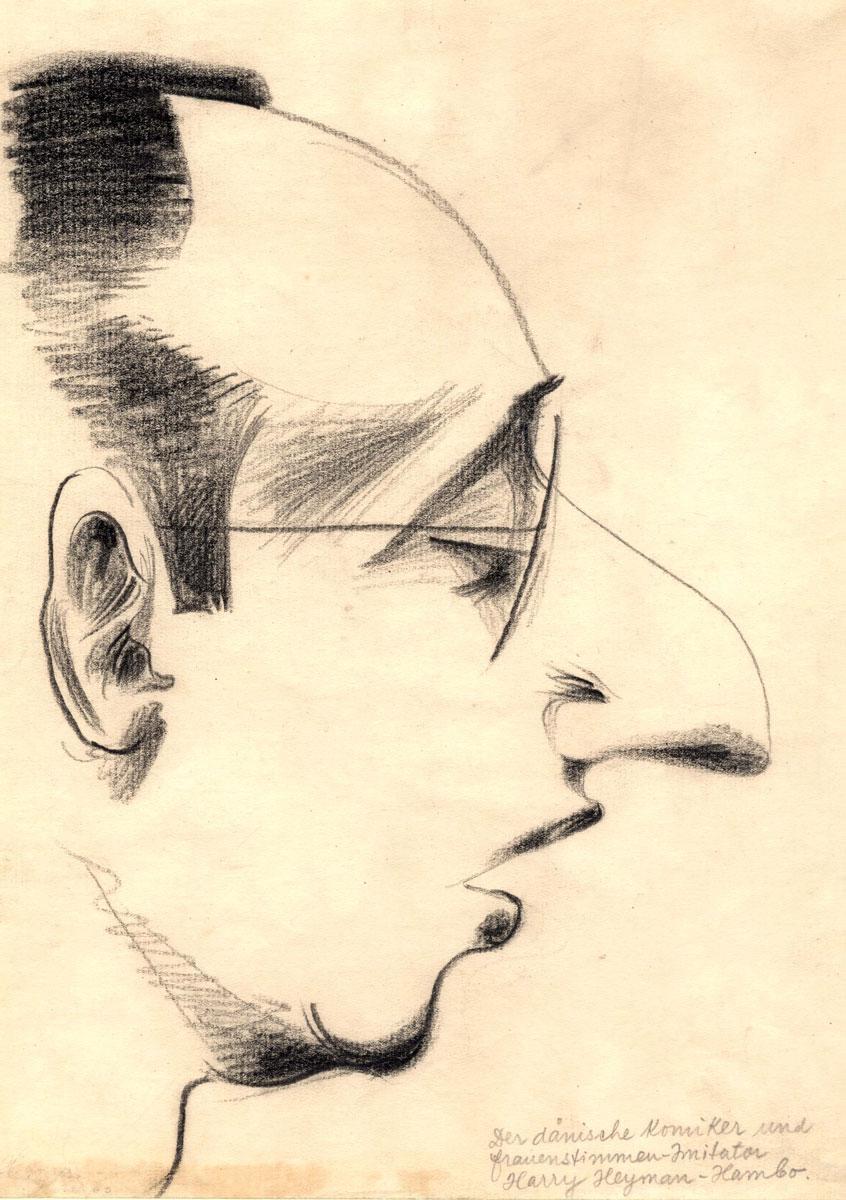
Comedian and mimic.
Born in 1907, Berlin, Germany. Deported from Copenhagen to the Theresienstadt Ghetto on October 14, 1943. After the liberation immigrated to Sweden.
Charcoal on paper
29.7X21 cm
Collection of the Yad Vashem Art Museum, Jerusalem
Gift of the Prague Committee for Documentation, courtesy of Ze’ev and Alisa Shek, Caesarea

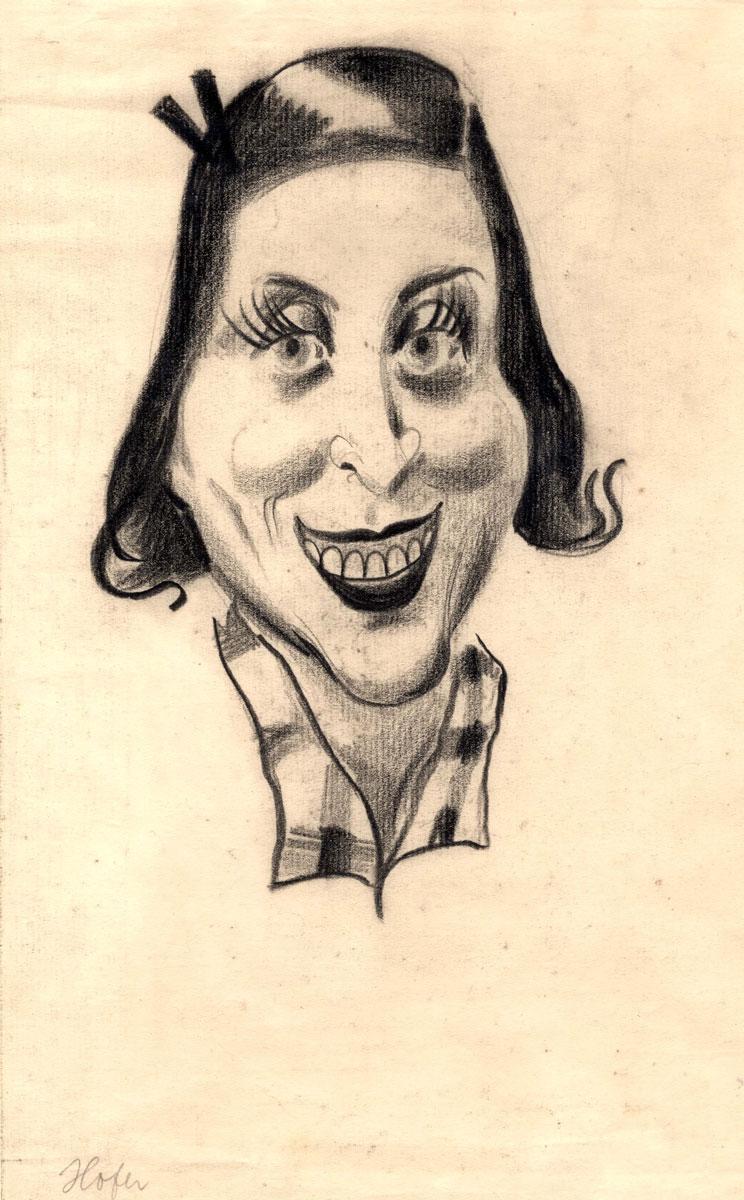
Cabaret artist.
Born in 1912. After the Anschluss, she fled to Prague, where she met her future husband, the comedian, Hans Hofer. The couple was deported to the Theresienstadt Ghetto on July 27, 1942. There, they established the Hofer Cabaret. On October 4, 1944, she was transported to Auschwitz, and from there to Flossenbürg. Survived.
Charcoal on paper
29.8X21 cm
Collection of the Yad Vashem Art Museum, Jerusalem
Gift of the Prague Committee for Documentation, courtesy of Ze’ev and Alisa Shek, Caesarea

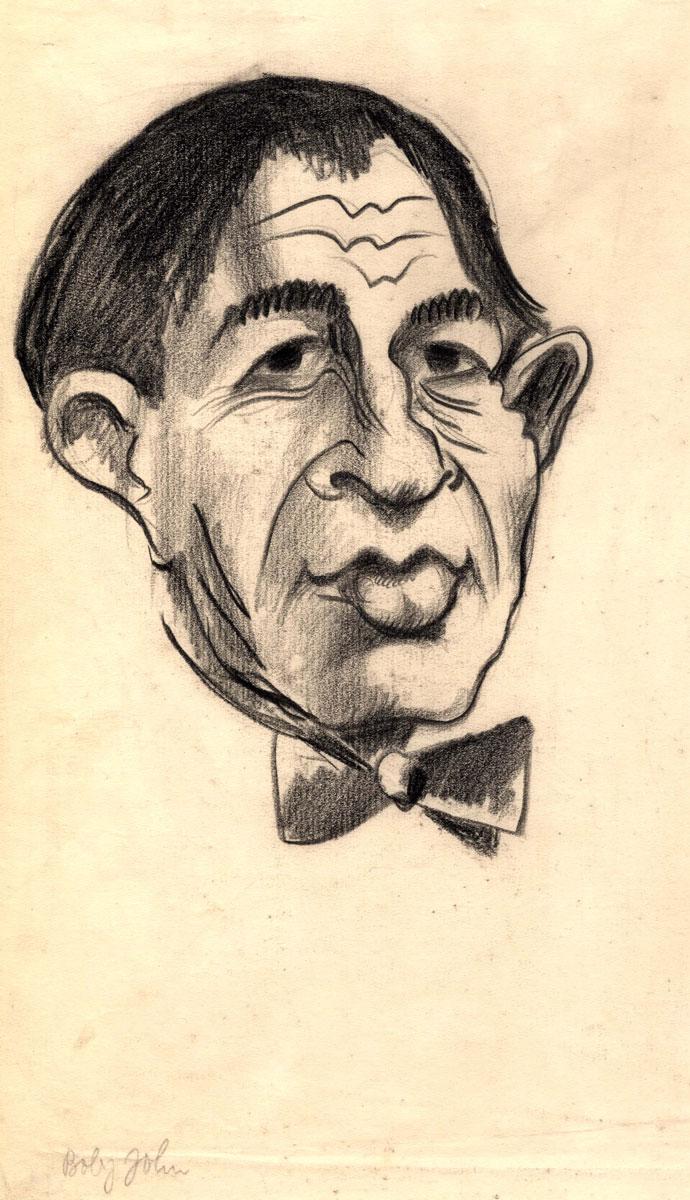
Actor.
Born in 1905. On September 25, 1942, deported to the Theresienstadt Ghetto. Transported to Auschwitz on September 25, 1942, and from there to Allach. Survived.
Charcoal on paper
29.5X21 cm
Collection of the Yad Vashem Art Museum, Jerusalem
Gift of the Prague Committee for Documentation, courtesy of Ze’ev and Alisa Shek, Caesarea

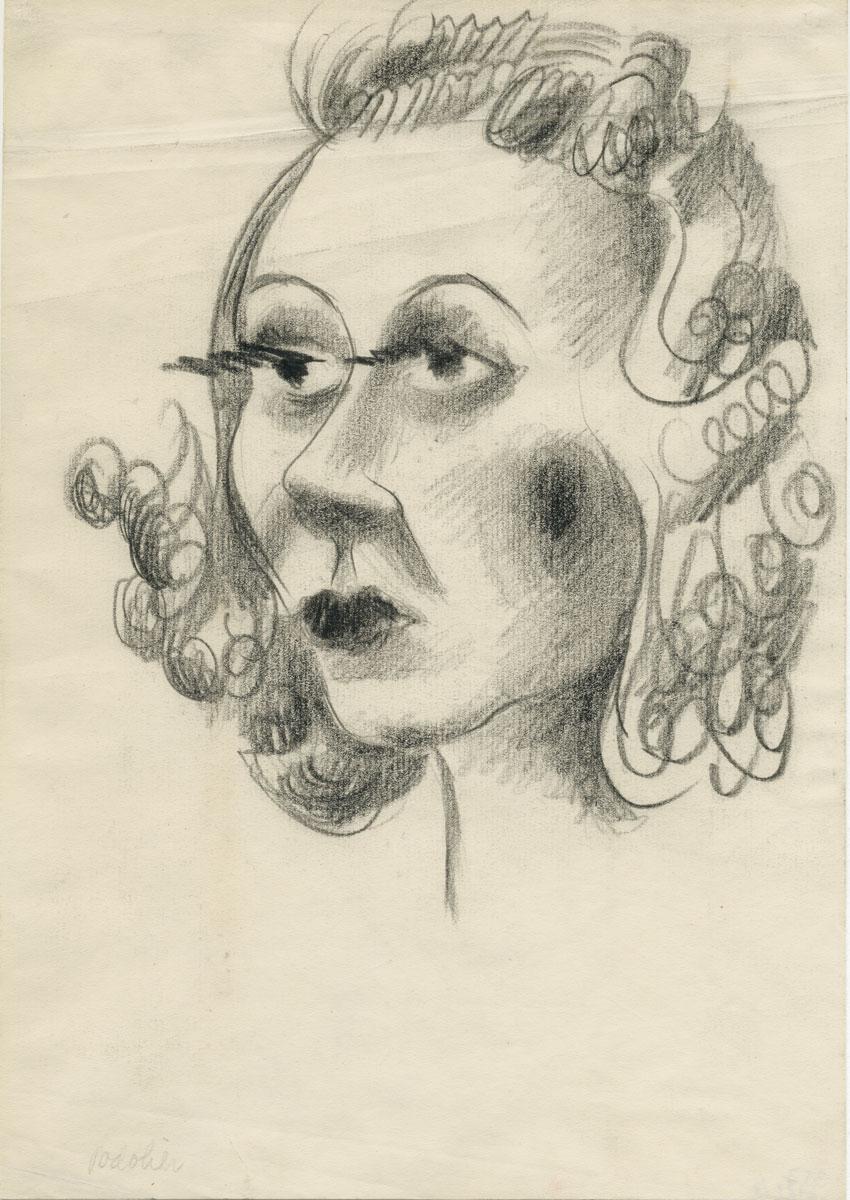
Charcoal on paper
Collection of the Yad Vashem Art Museum, Jerusalem
Gift of the Prague Committee for Documentation, courtesy of Ze’ev and Alisa Shek, Caesarea

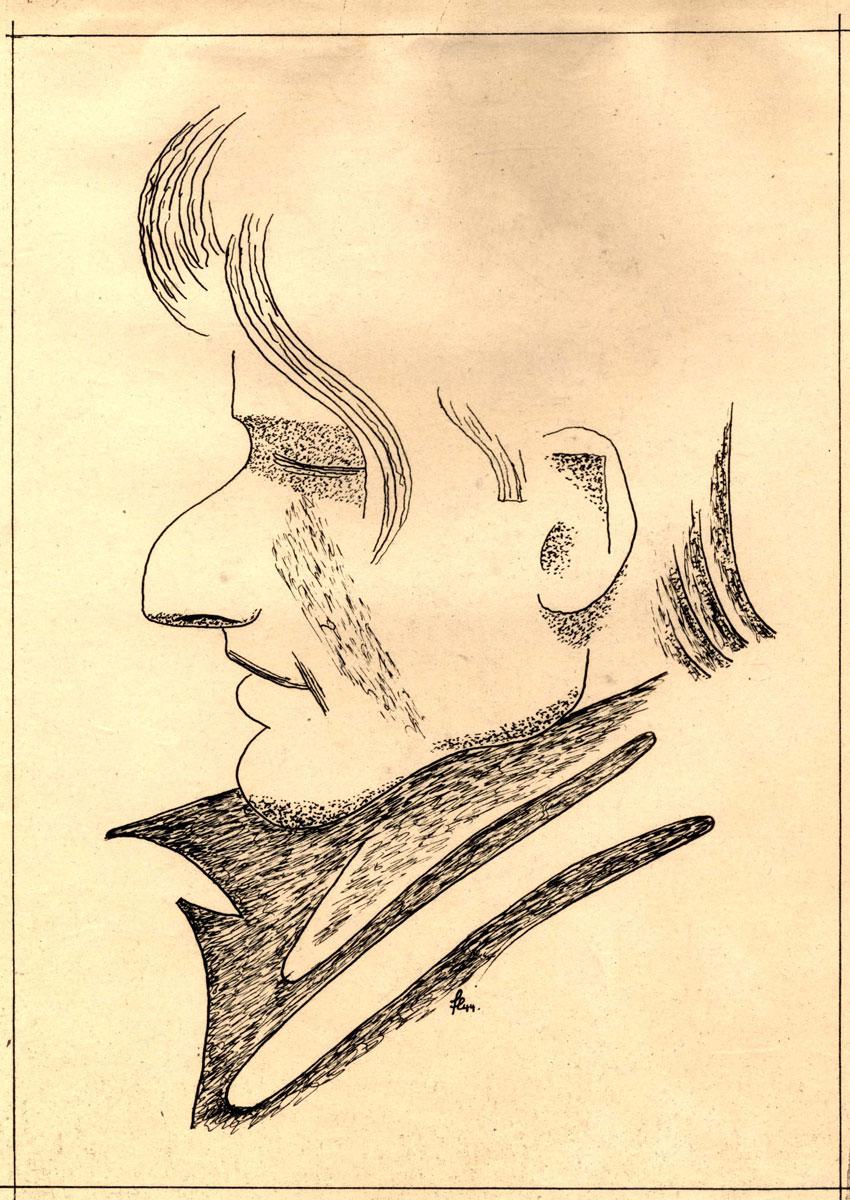
Theater manager and actor.
Born in 1918 in Prague. On December 22, 1942, deported to the Theresienstadt Ghetto. On October 16, 1944 transported to Auschwitz. According to an eyewitness report, he was shot to death by a Nazi soldier in January 1945 in KZ Fürstengrube.
Ink on paper
26.4X18.9 cm
Collection of the Yad Vashem Art Museum, Jerusalem
Gift of the Prague Committee for Documentation, courtesy of Ze’ev and Alisa Shek, Caesarea

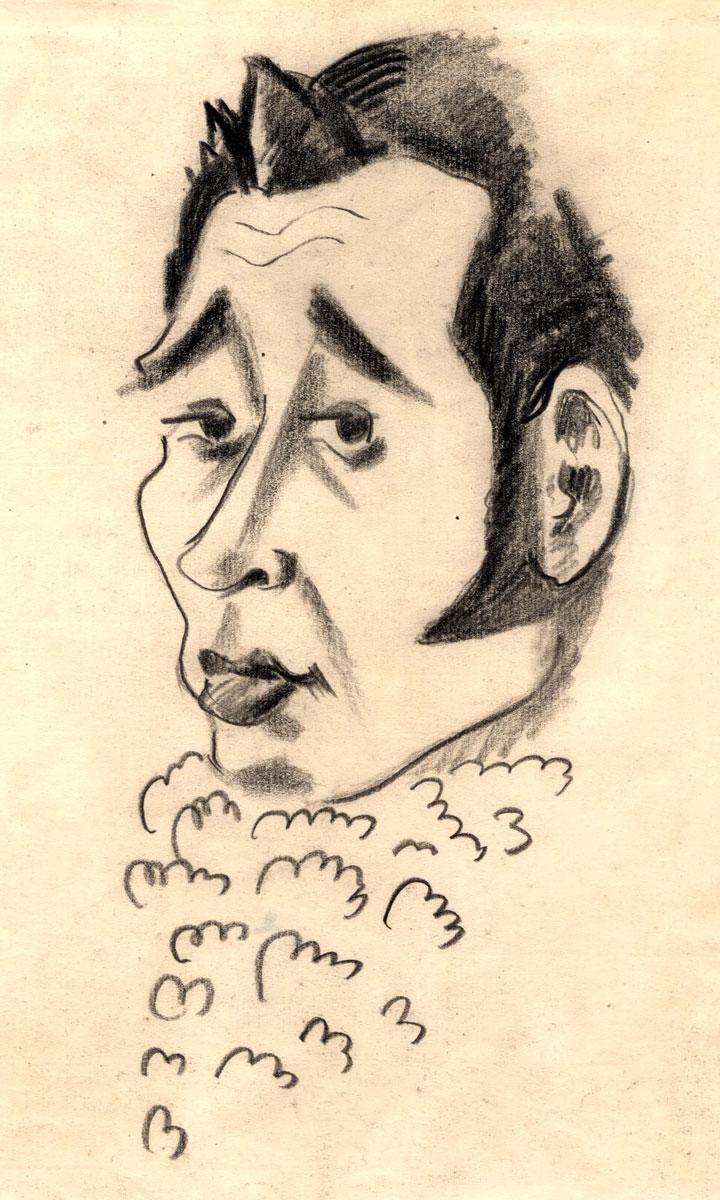
Actor, director, author and composer.
Born in 1907. On November 24, 1941, deported to the Theresienstadt Ghetto. On October 1, 1944, transported to Auschwitz, then to Labor Camp Meuselwitz, sub-camp of Buchenwald. Died of exhaustion in April 1945.
Charcoal on paper
29.7X21 cm
Collection of the Yad Vashem Art Museum, Jerusalem
Gift of the Prague Committee for Documentation, courtesy of Ze’ev and Alisa Shek, Caesarea

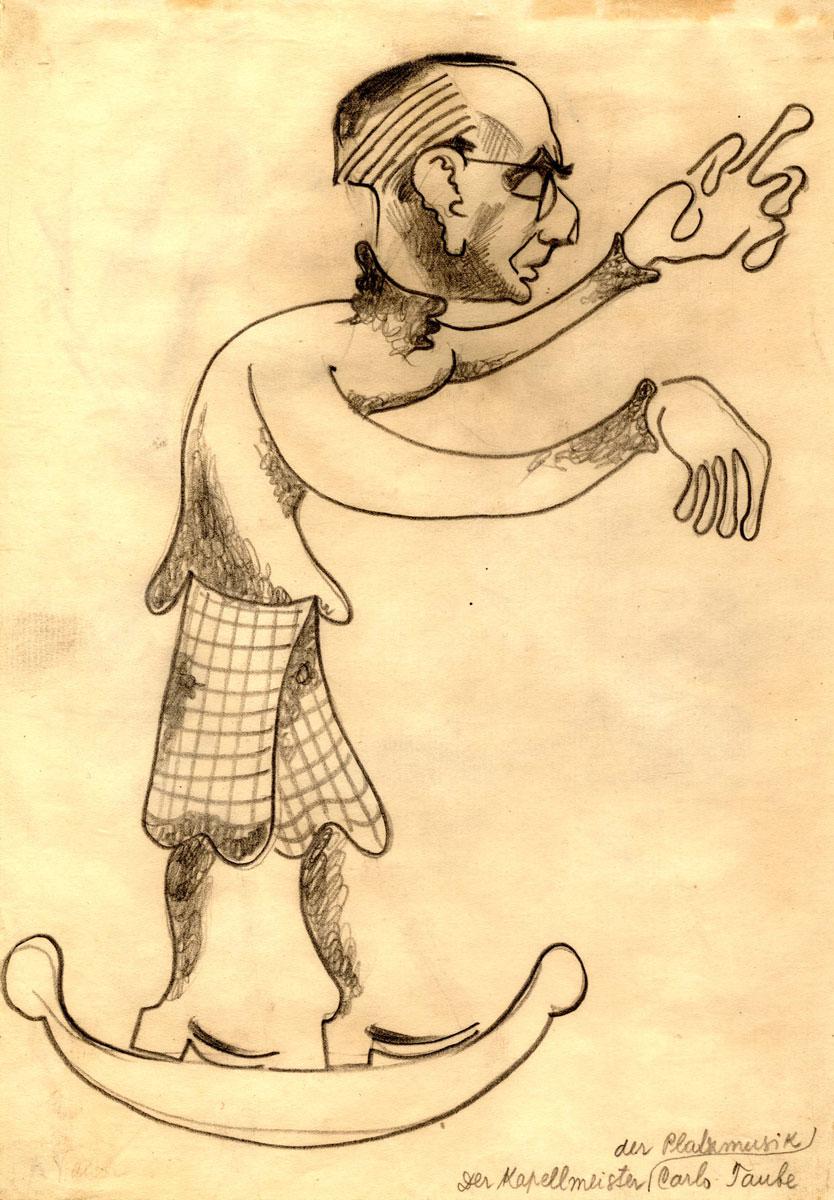
Pianist, composer and a conductor. Cabaret actor in Cafés in Vienna, Brno and Prague.
Born in 1897 in Galicia, Austro-Hungarian Empire. On October 10, 1941, deported with his wife and their son to the Theresienstadt Ghetto. On October 1, 1944, transported to Auschwitz where they were murdered.
Pencil on paper
29.5X21 cm
Collection of the Yad Vashem Art Museum, Jerusalem
Gift of the Prague Committee for Documentation, courtesy of Ze’ev and Alisa Shek, Caesarea







